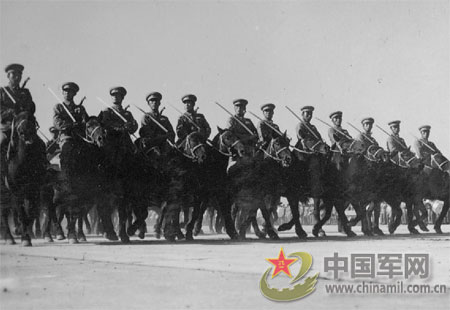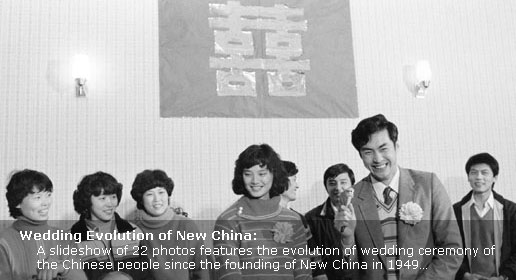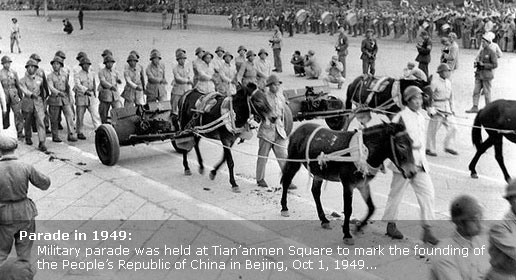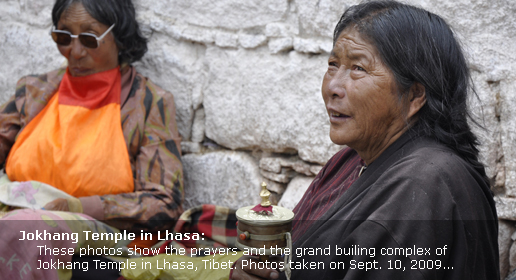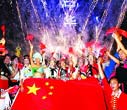Parade
1953 National Day military parade
(cctv.com)
Updated: 2009-08-26 15:05
|
|
On October 1, 1953, commander-in-chief Zhu De reviewed 10,038 officers and soldiers from his parade car. Zhu stepped onto the review stand and read "the order of the PLA general headquarters to all the armed forces in China." Then, Zhang Zongxun, Deputy Chief of General Staff of the PLA, led the armed forces into Tiananmen Square, and the march-past began. Cadets from the PLA Military Academy marched at the front, followed by cadets from other military colleges such as advanced infantry schools, infantry schools, communication colleges, artillery schools, engineer schools, tank schools, naval schools and aviation schools. Following them, the divisions of public security forces, infantry, cavalry, artillery and tank soldiers successively crossed Tiananmen Square. A formation of jet bombers and fighters flew over the Tiananmen area. The military band was the last to pass by the review stand.
In this parade, "Katyusha" made a high-profile appearance. "Katyusha" is the name of a beautiful, kind and brave girl in Russian folk stories as well as the nickname of the BM-13 rocket launcher. The BM-13 rocket launcher was the world's first self-propelled multi-barrel rocket launcher. It was successfully developed by the Soviet Union in 1933, was equipped with multiple trajectory stabilizers, and could launch sixteen 132mm rocket bombs in a volley with a maximum fire range of 8.5 kilometers. The bombs were equipped with tail fins, and had a maximum speed of 355 meters per second. Since the founding of New China, the PLA had been greatly influenced by the Soviet Red Army either in terms of organization or equipment. Much of the equipment came directly from the Soviet Red Army or was an imitation of that used by the Soviet Red Army. The "Katyusha" rocket launcher was introduced to China and became a major piece of equipment used by the PLA rocket launcher troops in the 1950s. In 1953, the rocket launcher troops attended the National Day military parade for the first time. The debut of “Katyusha” became a focus of attention.
"The Most Beloved"--- a delegation from the Chinese People's Volunteers attended the parade, adding a special meaning to it. In the Korean battlefield, the Chinese People's Volunteers fought courageously side by side with the Korean People's Army to crush the US invasion troops. In July 1953, the US-led United Nations Command was forced to sign an agreement with the Supreme Commander of the Korean People's Army and the Commander of the Chinese People's Volunteers, realizing a military armistice in Korea. This meant that the Chinese People's Volunteers achieved a major victory in the war to resist the US invasion and aid Korea. The Chinese People's Volunteers, with their brave and tough spirit, won the respect of people all over the world and were called "The Most Beloved" by the Chinese people. In the National Day military parade of 1953, a delegation of the Chinese People's Volunteers was invited to attend the parade, and they stood on the Tiananmen review stand together with the Party and state leaders to inspect the people's armed forces who were striding towards modernization. This was the most courteous reception that China could have possibly given to the Chinese People's Volunteers, and the delegation's attendance made the Chinese people proud and joyful at defeating the world's number one power.
In the parade, there was a strange phenomenon of "tractors towing the artillery". Towed by tractors, the huge gun-howitzers thundered across Tiananmen Square for inspection; this was rarely seen in the history of military parades all over the world. Photos of "tractors towing the artillery" became a notable art work which became popular at that time. The idea of "tractors towing the artillery" also became a classic in the history of New China's military parades.
Translated by LOTO
